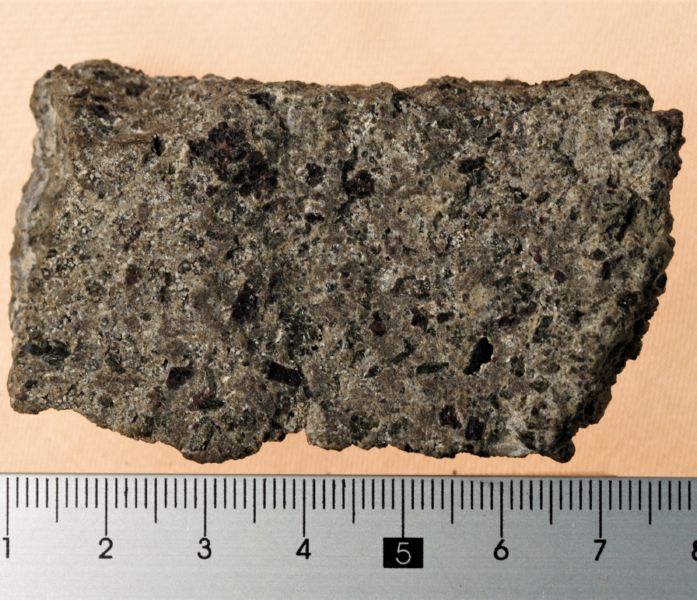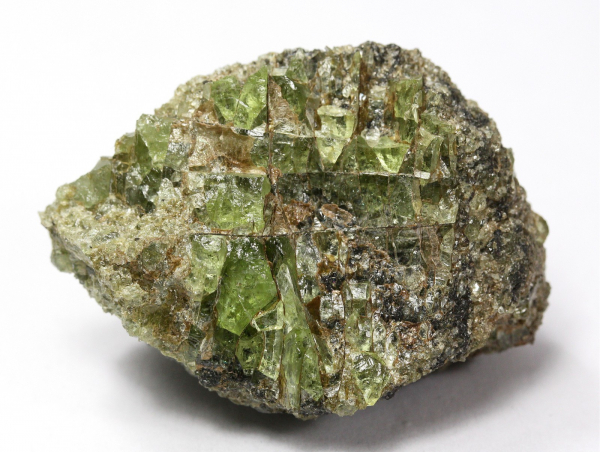Hühnerberg, Oberpleis, Siebengebirge, North Rhine-Westphalia, Germany
(Mg,Fe)2SiO4
Crystal System: orthorhombic
Colour: green, pale yellow or white/greenish-yellow, yellow or brown
Lustre: vitreous
Habitus: typically as granular or compact massive aggregates. Less frequently, as euhedral or subhedral equant to prismatic crystals
Hardness: 7
Fracture: conchoidal
Cleavage:{010}, {100}, imperfect
Density: 3.271-4.40 g/cm3
Origin and geological occurrence: the term “olivine” indicates a series between forsterite, Mg2(SiO4), and fayalite, Fe2(SiO4) [occhio ai pedici!]. Forsterite occurs in mafic and ultramafic rocks and, rarely, in metamorphosed impure dolomitic limestone. Fayalite is rarer than forsterite and occurs in several geological environments: ultramafic (less frequently also in felsic) volcanic and intrusive rocks, in granite pegmatite (rare), and in lithopysae in obsidian. Fayalite can be found in Fe-rich metasediments and impure carbonate rocks
Samples:
 |
9A.1 Olivine #neso soro silicates |
 |
9A.2 Olivine #neso soro silicates |

